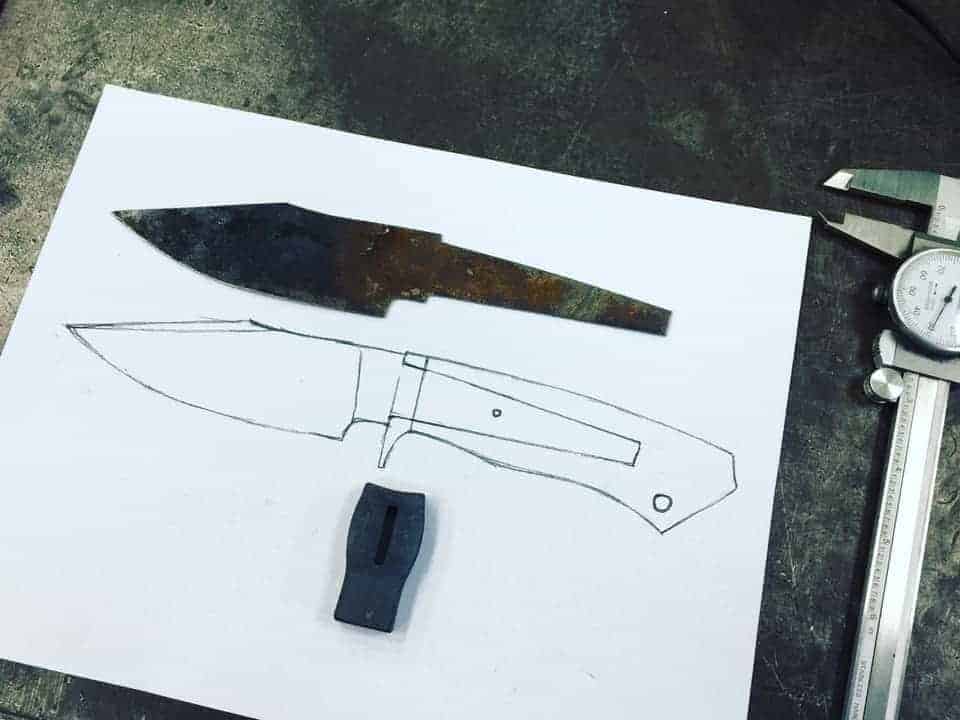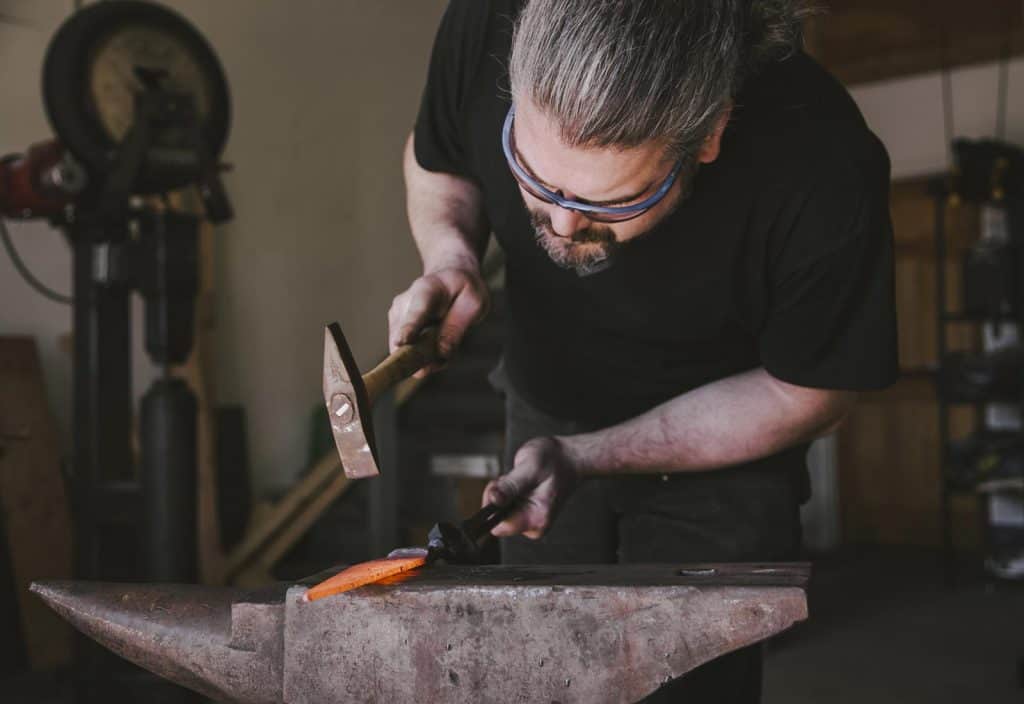

Design & Materials
We use only the finest materials in our knives. This means strictly new, modern alloys are acceptable for use as a cutting edge in a Rossi knife.
All heat treating and thermocycling is done in house, by Nick. Varying construction methods are used depending on the design of the knife, but every knife is designed to withstand generations of use. This is ensured with rigorous and destructive testing. Just because this craft started in 3200 BC doesn’t mean we are stuck there: Controlled kilns, liquid nitrogen and peer-reviewed research are just as important as a practiced eye and steady hand.
Traditional Methods
The heart of a Rossi knife is that it’s forged. Raw material is heated up to a plastic state, and using great force, it is formed to its final shape as if it were a piece of clay. Worked too cold, the blade can crack. Worked too hot, the blade can crumble. This process is as old as ironwork itself. What this archaic process adds is the intangible: A forged knife feels a little lighter, a little faster. It floats in the hand. It has intent.
Contemporary Design
With a craft as enduring as this, there are many knife design that just cannot be improved upon. There is a reason that kitchen knives have looked the same since Roman times. A Rossi knife takes everything that make these traditional, tried-and-true forms so excellent and adds a unique design language. We find it very difficult to define, singularly, the Rossi style. Inspiration is drawn from industrial design, artistic movements, architecture, fine art and literature.